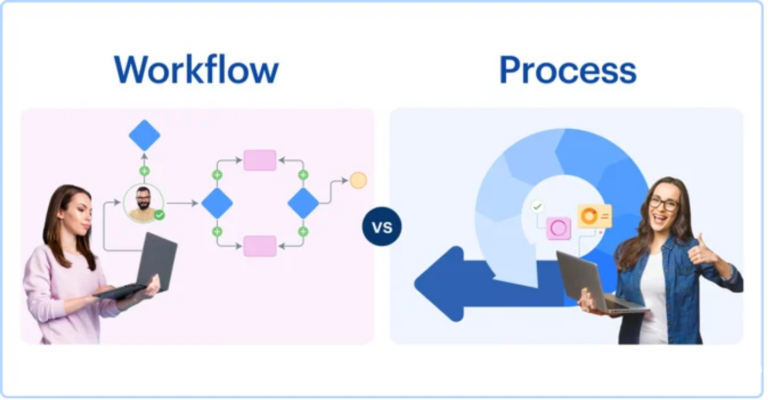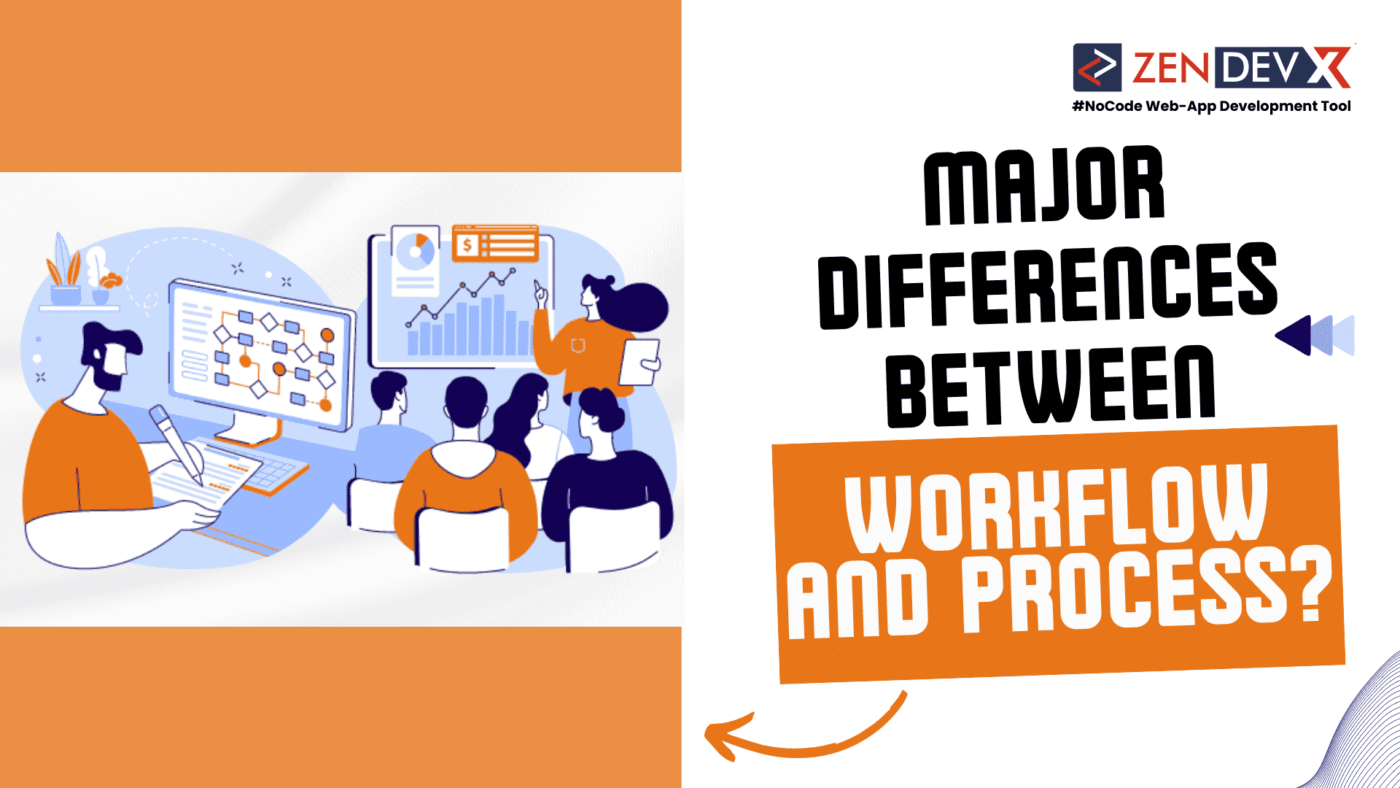Improving operations revolves mostly on two fundamental concepts: workflow and procedure. In the tech industry, these words are sometimes confused and prevent optimization, though. Workflow and process differ greatly for CIOs and BTPs; this goes beyond language to include strategic relevance.
Designed for CIOs and BTPs, our guide seeks to define these ideas by stressing their variances, relevance, and applications. This understanding will enable IT leaders to negotiate the complexity of procedures and systems, therefore enabling their companies to run more effectively and clearly in our digital environment.
What is a Workflow Process ?
Within an organization, a workflow process is a sequence of actions or processes meant to finish a certain activity or job. It outlines the activities in order, who is in charge of each one, and what equipment or resources one needs to finish a job. Aiming to increase productivity, guarantee consistency, and simplify communication, a workflow method.
Business Flow
Business processes are repeating activities involving numerous tasks that should be finished in a designated sequence. It reduces duplicates, provides a top-level perspective of what is happening for companies, and strengthens corporate efficiency and responsibility.
You might ask if there is any difference when you begin comparing processes to procedures. For many individuals, it is perplexing; but it does not finish with merely defining the two words. Knowing the conceptual differences between processes and workflows will help you better arrange your company.
Plotting Tracks
Let us momentarily discuss trains. Getting materials from one location to another requires much planning and thought. The tracks of a rail system are one fundamental component.
The tracks provide the engine and vehicles’ fixed path of direction. Before arriving at the last stop, the tracks could lead to other stations. They will also be somewhat naturally flexible, able to avoid some stations or choose another route if necessary.
Within the realm of corporate processes, the tracks represent the flow. The train has to travel these tracks. A workflow could last a lot of time and incorporate several stops. Alternatively, depending on the predefined path, it could twist and turn and land at other stations.
Establishing a workflow for your company process can help you to show it where it belongs.
Organization Workflow
Workflow is a road map for staff members to use each time they begin a project. Consider expense reimbursements, in which case staff members turn in their bills for credit-worthiness. Under a normal expense approval process:
- Step First : The worker completes a form adding the specifics of spent money.
- Step Second : The paperwork is turned in together with verification of invoices.
- Step Third : The paperwork is forwarded to the finance staff; they check the request.
- Step Four: After verification, the request could be authorized or denied.
- Step Five:
- (a): Should the request be approved, the finance staff returns the funds to the employee.
- (b): Should the request be denied, the form is returned to the employee under the stated justification. This denotes the end of this process.
Product return authorizations, purchase approval requests, employee onboarding, database adding of new clients, etc., are some typical workflow examples.
Business Process
A business process is a sequence of related actions carried out by a group of users aiming at a certain organizational goal. Following every stage of a business process makes a person responsible. Some well-versed ideas including business process automation, business process reengineering, and more have their roots in this area.
Procedure in Business Organizations
Large-scale problems that could influence the ultimate objectives of a company are resolved via processes. Procedures enable the identification of the necessary chores as well as those maybe superfluous.
Teams can perform the essential operational activities of marketing, high-level administration, logistics and procurement, information technology, auditing, etc., by means of processes.
Workflows vs. Processes: Main Differences
Processes and workflows differ mostly in these ways.

Methods of Procedure
A list of chores follows a process:
- Task-Oriented: Aimed at objectives.
- Tactical Strategic: Focuses on completing a task; focuses on reaching a major corporate goal.
- Designed by Enumerating Actions and Chores: Must take into account a far wider spectrum of individuals, statistics, reports, and business impact.
Examples of Process and Workflow
Process of Employee Onboarding
An often-used corporate process with several steps is employee onboarding. It begins when a job offer is accepted and covers chores include cleaning the employee’s workspace, configuring their IT systems, giving them required training, introducing them to the company, etc. This procedure intends to properly include the new hire within the company.
Workflow Documentation Approval
A document approval process is the series of actions needed to approve a document. The following illustrates a basic process for document approval:
- An employee produces a document and turns it in for clearance.
- The manager studies the paperwork.
- Should revisions be required, the paper is returned to the staff member (reiterating process 1). Should no revisions be required, the management authorizes the paper.
- The paperwork is forwarded to the department head for ultimate clearance after the management approves.
- The document is regarded formally accepted and can be published or used once the department head accepts it.
Every chore in this system depends on the one before it. This is a straight, methodical road meant to effectively move a document from inception to final approval.
Conclusion :
Consider trains if you are debating process against workflow. Though they are fundamental for getting things done, workflows are not the only thing you should consider. Excellent business process management (BPM) systems also incorporate highly functioning forms, alerts, communication, and a strong engine to drive things along.


